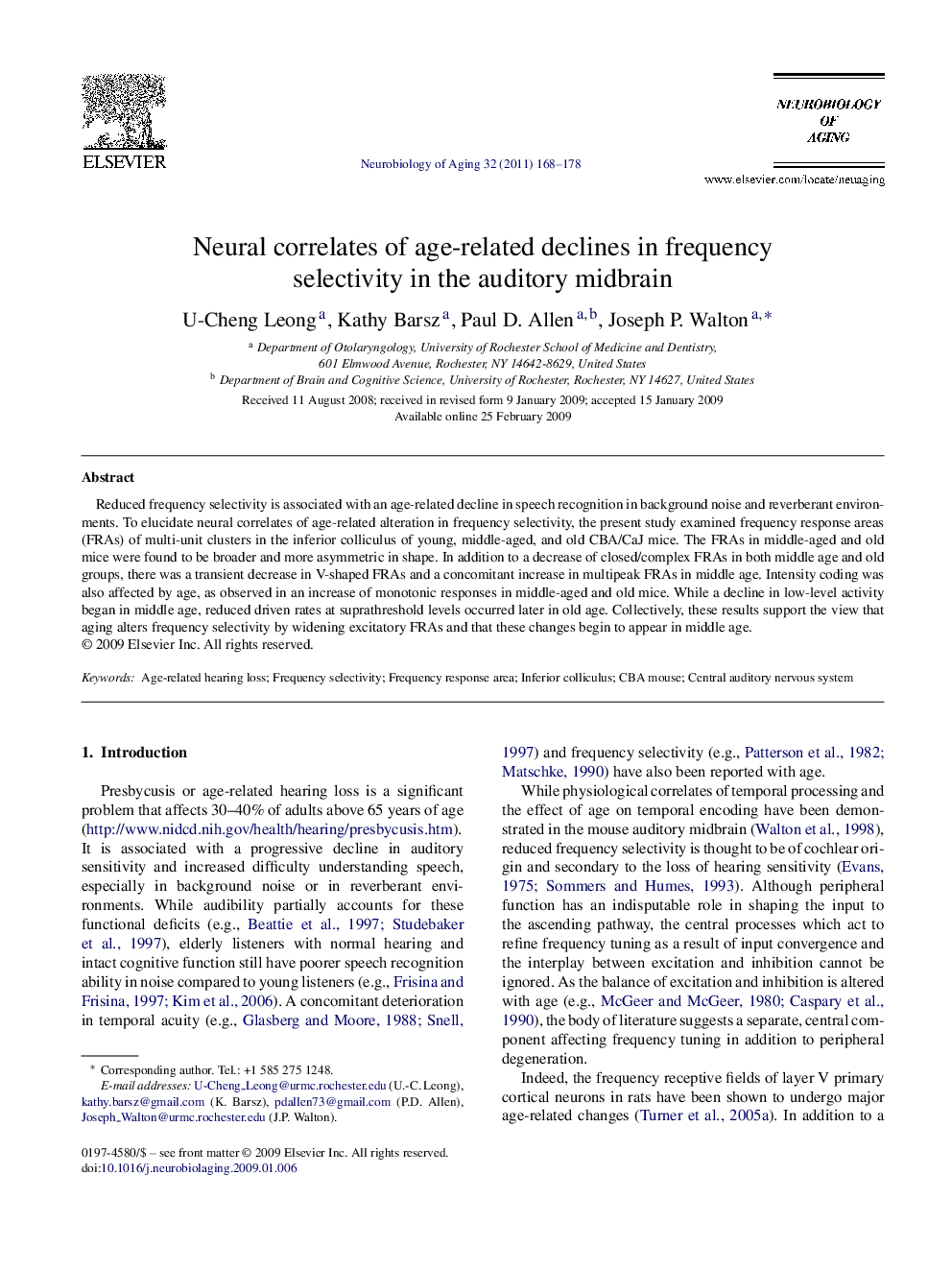| کد مقاله | کد نشریه | سال انتشار | مقاله انگلیسی | نسخه تمام متن |
|---|---|---|---|---|
| 330203 | 1433612 | 2011 | 11 صفحه PDF | دانلود رایگان |

Reduced frequency selectivity is associated with an age-related decline in speech recognition in background noise and reverberant environments. To elucidate neural correlates of age-related alteration in frequency selectivity, the present study examined frequency response areas (FRAs) of multi-unit clusters in the inferior colliculus of young, middle-aged, and old CBA/CaJ mice. The FRAs in middle-aged and old mice were found to be broader and more asymmetric in shape. In addition to a decrease of closed/complex FRAs in both middle age and old groups, there was a transient decrease in V-shaped FRAs and a concomitant increase in multipeak FRAs in middle age. Intensity coding was also affected by age, as observed in an increase of monotonic responses in middle-aged and old mice. While a decline in low-level activity began in middle age, reduced driven rates at suprathreshold levels occurred later in old age. Collectively, these results support the view that aging alters frequency selectivity by widening excitatory FRAs and that these changes begin to appear in middle age.
Journal: Neurobiology of Aging - Volume 32, Issue 1, January 2011, Pages 168–178